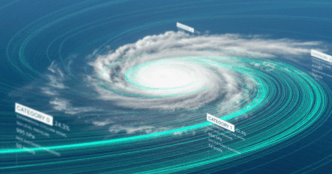Google DeepMind and Google Research just launched Weather Lab, a new AI-powered weather site tracking tropical cyclones with cutting-edge models. It offers live and historical cyclone forecasts, including formation, path, intensity, size, and shape—up to 15 days ahead.
The site features an experimental cyclone model using stochastic neural networks. It can generate 50 possible cyclone scenarios, matching or beating the accuracy of top physics-based models. Early tests show it predicts cyclone tracks and intensity better than ECMWF’s ENS model and NOAA’s HAFS system.
The model has been tested with the U.S. National Hurricane Center (NHC), which is now viewing live AI predictions alongside existing models during the 2025 cyclone season. Weather Lab also provides over two years of historical data to help experts and researchers validate and analyze model performance.
Weather Lab includes input from multiple AI models (WeatherNext Graph, WeatherNext Gen) and physics-based ones from ECMWF. Users can compare forecasts to better understand risks and scenarios, aiding emergency preparedness and early warnings.
The AI model combines decades of past cyclone data with global weather reanalysis to improve predictions. It’s the first single system to balance cyclone track and intensity forecasting—something physics-based models usually handle separately.
Dr. Kate Musgrave from Colorado State’s Cooperative Institute for Research in the Atmosphere praised the model’s skill, saying it matches or surpasses the best current models. Collaborations also include the UK Met Office, University of Tokyo, and Japan’s Weathernews Inc.
Weather Lab is strictly a research tool; forecasts aren’t official warnings. Users should rely on local meteorological agencies for decisions during storms.
This marks a major effort by Google DeepMind to adapt AI for real-world disaster forecasting, aiming to improve early alerts and save lives in cyclone-prone areas.
“We’re looking forward to confirming those results from real-time forecasts during the 2025 hurricane season.”
Dr. Kate Musgrave, CIRA Research Scientist














